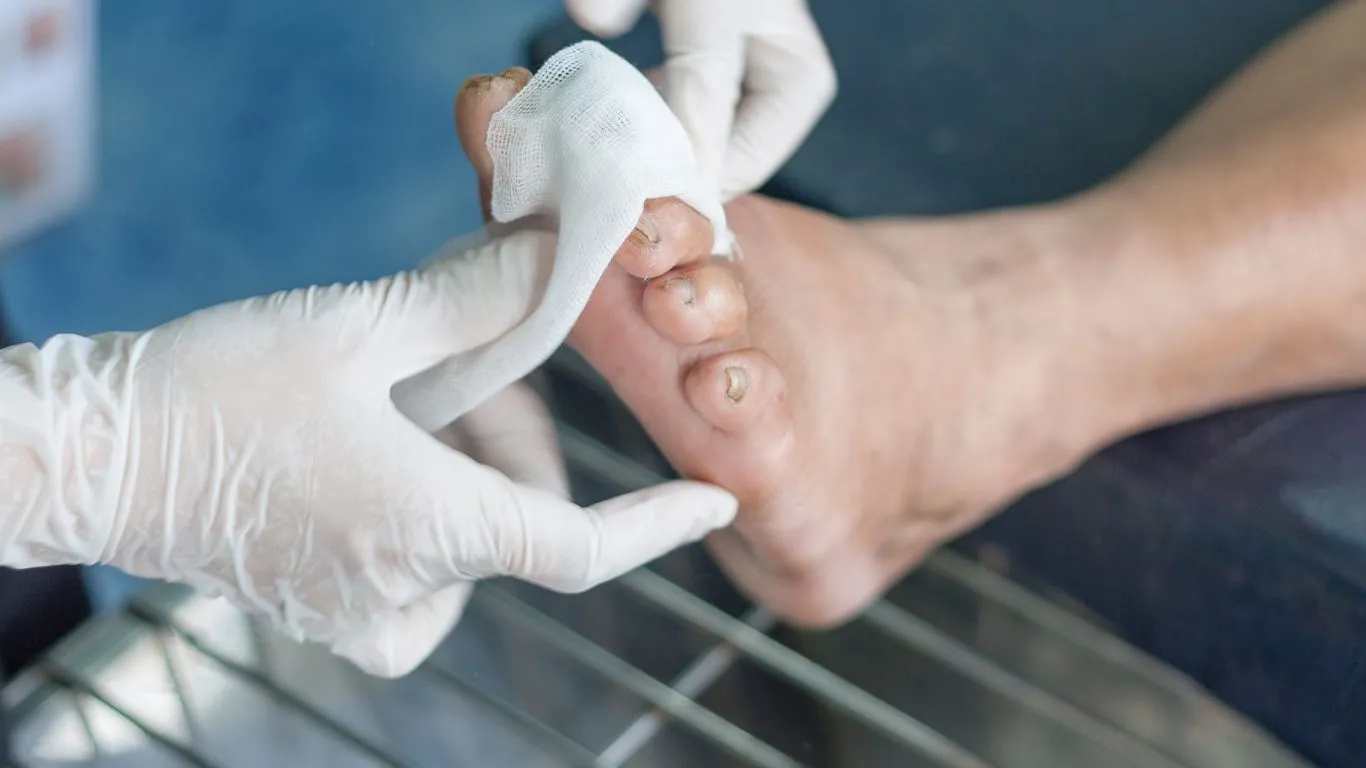
31 أغسطس Prevention of diabetic foot
Diabetic foot is a health condition associated with a range of problems that may affect the feet of diabetic patients, such as complications from poor blood circulation to the legs and nerve damage due to significantly elevated blood sugar levels. Dr. Amir Malkawi, a vascular surgery consultant, provides us with a set of tips on preventing diabetic foot:
Preventing Diabetic Foot
Adherence to treatment plan and controlling blood sugar levels are the most important ways to prevent diabetic foot. Additionally, there are home care measures and tips that Dr. Amir Malkawi mentions:
Regularly check your feet
It is recommended for diabetic patients to regularly examine their feet for signs indicating any health problems. Early treatment of foot problems prevents their progression to diabetic foot. Signs of foot problems include swelling, redness, ulcers, bleeding, and changes in color.
Take care of foot hygiene
This includes:
- Washing your feet daily with warm water and soap.
- Avoiding prolonged soaking of the feet in water.
- Drying the feet thoroughly after washing.
- Applying moisturizing cream to the top and bottom of the feet, while avoiding applying it between the toes. Moisturizing the feet is important, but moisture between the toes (an enclosed area) increases the risk of infection.
Regularly trim your toenails
Trimming toenails helps prevent injury to adjacent toes from long nails and reduces the risk of developing ulcers on the feet. To prevent ingrown toenails, it’s important to trim nails properly.
Choose suitable footwear
Wearing tight shoes can cause foot injuries and ulcers. Therefore, it is essential to choose properly fitted medical shoes according to the foot size. Before wearing shoes each time, ensure there are no sharp objects inside the shoes, such as small stones that may enter the shoe while walking.
Avoid exposing your feet to extreme heat or cold
Due to frequent nerve damage in the extremities caused by high blood sugar levels, there is a reduced sensation in the feet. This increases the risk of skin burns or tissue damage in the legs due to extreme heat or cold without feeling it. Therefore, avoid exposing the feet to any source of high heat and keep the feet adequately warm during winter.
Avoid walking barefoot
Dr. Amir Malkawi advises diabetic patients to avoid walking barefoot, whether indoors or outdoors, to ensure sufficient protection for the feet.
Maintain blood flow to your feet
This can be achieved by elevating your feet above the level of your body when sitting and by moving or wiggling your toes in a specific manner several times a day, with each session lasting a few minutes.
Read Also: The Carotid artery disease and strokes
Regularly see your doctor
It is important to regularly consult your diabetes doctor to ensure control of blood sugar levels. Additionally, regular visits to a dermatologist or specialists monitoring foot problems are essential, especially if you have previously experienced foot health issues. Refrain from attempting to treat skin bumps and ulcers without consulting a doctor.
Follow a healthy diet
Adhering to a healthy diet provides the body with essential nutrients to maintain foot health and prevent health problems from developing.
Engage in physical activities
Maintaining physical activity helps regulate blood sugar levels, which positively impacts reducing the risk of diabetic foot complications.
Keep blood pressure and cholesterol levels normal
It is necessary to comply with medications prescribed by doctors to control associated health problems or any other chronic diseases, as complications in diabetic patients increase the risk of developing other complications.
Avoid strenuous exercise
Avoid physical exercises that may injure the feet or cause excessive friction or pressure on them, as these exercises may lead to the development of foot problems.
Reduce your weight
Excess weight puts pressure on the feet, increasing the risk of toe friction when wearing shoes, thereby increasing the likelihood of sores, ulcers, and blisters forming.
Quit smoking
Smoking slows down wound healing and ulcer recovery, in addition to causing circulation disorders in various parts of the body, including the feet. Quitting smoking reduces the risk of diabetic foot complications.
References:
[1] – https://www.verywellhealth.com/diabetic-feet-5216003
[2] – https://www.cdc.gov/diabetes/library/features/healthy-feet.html
[3] – https://diabetes.org/healthy-living/seniors/foot-care-tips
[4]-https://www.everydayhealth.com/foot-health-pictures/11-tips-for-good-diabetes-foot-care.aspx
[5] – https://www.foothealthfacts.org/conditions/diabetic-foot-care-guidelines
[6] – https://www.diabetes.org.uk/guide-to-diabetes/complications/feet/taking-care-of-your-feet
[7] – https://www.cdc.gov/diabetes/library/features/healthy-feet.html

